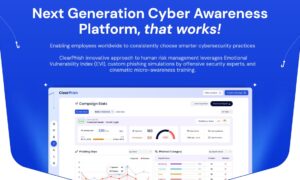Cyber threats, if left unchecked, can cripple modern businesses. And while major corporations may have the resources to eventually recover from breaches, it can be a terminal issue for smaller firms.
As such, taking steps to improve your security must be a priority, especially if you can’t afford the fallout of an incursion event.
This is where the MITRE ATT&CK framework comes into play. It gives organizations the means and methods with which to fight back against cybercriminals, so let’s dive in and see what benefits it brings to the table.
Image Source: Pixabay
What is the MITRE ATT&CK framework?
This is a fairly tricky acronym to unpick on the surface, but in short, it stands for Adversarial Tactics, Techniques and Common Knowledge, with the ampersand doing the heavy lifting to make it work as an analog for the word ‘attack.’
This essentially breaks down as an exploration of how hackers plan their attacks, what tools they use to execute them, and why they are compelled to launch their disruptive campaigns in the first place.
At the core is a knowledge base which is both contributed to and curated by security specialists and researchers, with a view to empowering others with the insights gleaned into the murky world of cybercrime.
It is a tangible example of the age-old term ‘know thy enemy.’ Only by learning how hackers think and act can organizations hope to defend themselves effectively.
What are the main components?
The techniques and tactics covered by the ATT&CK framework are many and varied, and there are 14 discrete examples in total.
This includes things like the reconnaissance needed to find out the inner workings of a business that is being targeted, the resources required to launch an attack against it, the means by which data will be stolen and exfiltrated, and the lasting damage that can be done to systems through disruptive tools like ransomware.
There are different matrices of tactics depending on the context of the threat. This includes analyzing and predicting the behavior of cyber adversaries in common enterprise environments like Windows, Linux, and the cloud, as well as on mobile platforms which are increasingly common as a point of vulnerability.
How can MITRE ATT&CK be harnessed?
If you choose to leverage the tools and teachings of the framework, there are a number of ways to go about this, each of which should certainly lead to a more robust and resilient security setup.
For example, when it comes to testing you can put together realistic scenarios based on the likely adversaries you will face so that when you are putting your security through its paces, the results will be actionable and effective.
You can also make use of the behavioral analytics of the framework to get a better understanding of what kinds of activities are recognizably suspicious. Often the presence of malicious third parties on mission-critical systems is not noticed for a protracted period, so such steps will definitely be beneficial to businesses.
Additionally, it is easier to assess separate components of your operations to see whether there are areas that are better defended than others, thus enabling you to plug any gaps and prevent any unspotted vulnerabilities from being exploited.
All of this means that businesses are also empowered to assess security tools and solutions and determine whether they are up to scratch or unfit for their needs. This makes procurement and decision-making less taxing and eliminates any assumptions from the process.
This framework can form the foundation of rugged, reliable cybersecurity policies, so companies cannot afford to delay adopting it.




































